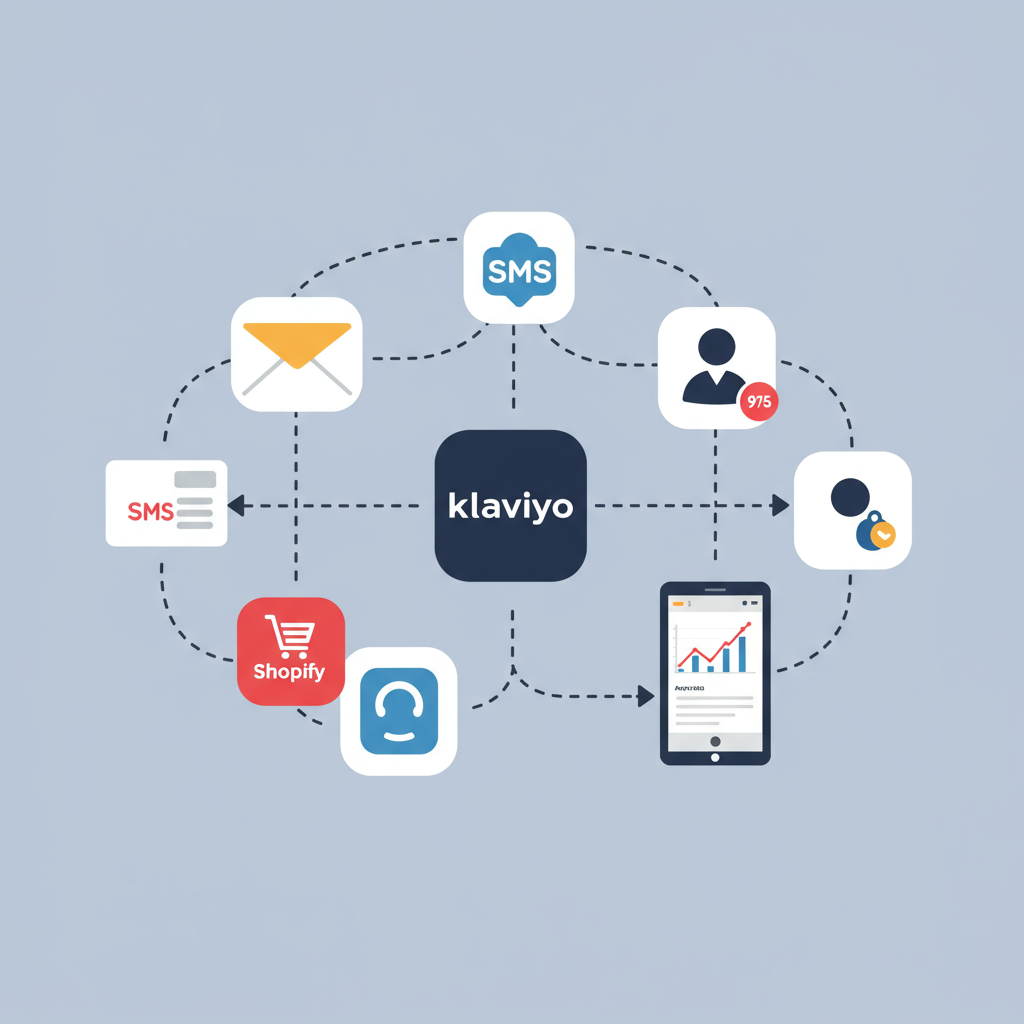Transforming Customer Relationships and Boosting Sales Through Smart Automation
As a merchant, I’m always looking for ways to deepen customer relationships and boost sales.
One tool that has truly transformed my Shopify store’s marketing efforts is Klaviyo.
If you’re running an e-commerce business on Shopify, integrating Klaviyo isn’t just an option; I believe it’s a necessity for serious growth.
It’s an incredibly powerful email and SMS marketing platform designed specifically for e-commerce.
Today, I want to walk you through exactly how I use Klaviyo with my Shopify store to maximize its potential.
Before we dive into the “how,” let me quickly explain *why* I chose Klaviyo over other platforms.
Its deep integration with Shopify means it pulls in all my customer data – purchases, browsing behavior, abandoned carts – seamlessly.
This rich data allows me to create highly personalized and targeted marketing campaigns that truly resonate with my customers.
I’ve found this level of personalization directly translates into higher open rates, click-through rates, and ultimately, more sales.
The first step, and thankfully, it’s incredibly straightforward, is integrating Klaviyo with your Shopify store.
I simply logged into my Klaviyo account, navigated to the “Integrations” tab, and selected Shopify.
Klaviyo then guides you through connecting your Shopify store with just a few clicks, requiring you to authorize the connection.
Once connected, Klaviyo immediately starts syncing historical data from your Shopify store, which I found incredibly helpful for getting started quickly.
This initial sync includes customer profiles, order history, and product information, laying the groundwork for everything else we’ll do.
After integration, my next focus was on growing my email list. Klaviyo’s built-in forms and pop-ups are fantastic for this.
I designed a simple, yet effective, welcome pop-up offering a discount for new subscribers.
These forms are fully customizable, allowing me to match my brand’s aesthetic perfectly.
I also set up an exit-intent pop-up to capture visitors who were about to leave my site without subscribing.
This is where Klaviyo truly shines for me. With all that Shopify data, I can segment my audience in incredibly precise ways.
I create segments for high-value customers, repeat purchasers, customers who viewed a specific product but didn’t buy, or even those who haven’t purchased in a while.
For example, I have a segment for “Customers who purchased Product X but not Product Y” to cross-sell.
This granular segmentation allows me to send highly relevant messages, making my marketing feel less like spam and more like a helpful recommendation.
Automated flows (or “sequences” or “journeys”) are the backbone of my Klaviyo strategy. These are pre-built email or SMS series triggered by specific customer actions.
My absolute must-haves, which I highly recommend you set up immediately, include:
**Welcome Series:** This flow greets new subscribers, introduces my brand, and often includes a first-purchase incentive. I usually make this 3-5 emails long.
**Abandoned Cart Flow:** This is a huge revenue driver for me. When someone adds items to their cart but doesn’t complete the purchase, Klaviyo automatically sends reminders. I typically send 3 emails over 24-48 hours.
**Browse Abandonment Flow:** Similar to abandoned cart, but for those who viewed products without adding to cart. It’s a softer nudge.
**Post-Purchase Flow:** This is crucial for building loyalty. I send thank-you emails, product care tips, request reviews, and suggest related products.
**Win-back Flow:** For customers who haven’t purchased in a specific period, I send a series of emails to re-engage them, often with a special offer.
Setting these up initially takes some time, but once they’re live, they work 24/7, generating sales on autopilot.
While flows are automated, campaigns are my one-off sends for promotions, new product launches, or seasonal sales.
Again, I leverage my segments here. Instead of blasting my entire list, I send targeted campaigns to specific groups.
For a new product, I might send an exclusive early access email to my VIP segment before a general announcement.
Klaviyo’s analytics dashboard is incredibly insightful. I regularly check my flow performance, campaign open rates, click-through rates, and most importantly, revenue attributed to Klaviyo.
This data helps me refine my strategies, A/B test different subject lines or email content, and continuously improve my results.
I can see exactly which emails are performing best and which need optimization.
My Personal Tips for Success:
**Start Simple:** Don’t try to set up every flow and segment at once. Begin with the welcome series and abandoned cart, then expand.
**Personalize Everything:** Use dynamic content to include customer names, product recommendations, and order details.
**Test and Optimize:** Always be testing subject lines, call-to-actions, and send times.
**Don’t Forget SMS:** If applicable to your audience, integrate SMS into your flows for even higher engagement, especially for urgent messages like abandoned cart reminders.
**Clean Your List:** Regularly remove unengaged subscribers to maintain good deliverability.
Integrating Klaviyo with my Shopify store has been one of the most impactful decisions I’ve made for my business. It’s allowed me to build stronger customer relationships, automate crucial marketing tasks, and significantly increase my revenue.
I truly believe it’s an indispensable tool for any serious Shopify merchant.
What are your thoughts on using Klaviyo with Shopify? Have you found it as transformative as I have? I’d love to hear your experiences.






